Table of Contents
Get Baby Started Solid Foods
Introducing solid foods to your baby is an exciting milestone, but it can also raise many questions for parents. Knowing when and how to introduce solids, as well as what foods to start with, can help ensure a smooth transition from milk or formula to solids. In this guide, we’ll cover everything you need to know about getting your baby started on solid foods, offering practical tips and advice along the way. Plus, we’ll highlight some helpful products from our store to make this journey easier.
Introducing your baby to solid foods is an exciting milestone, but it’s important to do it right to ensure a smooth transition. According to experts, the best time to start is when your baby shows signs of readiness. For more information on the best practices for introducing solid foods to babies, you can refer to this highly trusted resource. This guide offers tips and recommendations from pediatric professionals to help you get started with your baby’s solid food journey.
As you embark on the exciting journey of introducing solid foods to your baby, it’s essential to consider their overall comfort and well-being. One key aspect of this is dressing your little one appropriately for each season. Proper clothing can ensure your baby is comfortable during mealtimes, especially as they explore new textures and tastes. For helpful tips on choosing the right outfits, check out our Ultimate Guide on Dressing Your Baby for Every Season, which provides valuable insights to keep your baby cozy and stylish all year round.
When and How to Introduce Solid Foods
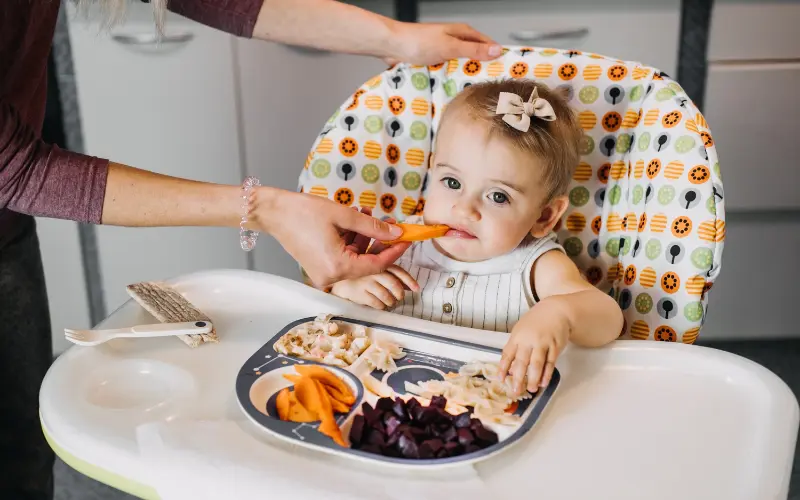
The first thing parents want to know is: When and how to introduce solid foods? While every baby is different, most pediatricians recommend starting solids around six months of age. By this time, babies typically show signs of readiness, such as sitting up with minimal support, showing interest in food, and losing the tongue-thrust reflex that prevents them from pushing food out of their mouth.
It’s important to start with simple, single-ingredient foods, like mashed or pureed fruits and vegetables. Offering one new food at a time allows you to monitor for any allergic reactions. For example, soft foods like mashed bananas or sweet potatoes are great options to start with.
You’ll also need some baby-friendly utensils, like our Silicone Feeding Set, which includes a soft spoon and bowl designed for tiny hands and sensitive gums. The set helps make feeding a smooth experience for both you and your baby.
Feeding Your Baby: When to Start with Solid Foods

Understanding feeding your baby: when to start with solid foods can ease the process and ensure your baby gets the best nutritional start. As your baby begins eating solids, it’s important to remember that milk or formula will still be their primary source of nutrition. Solids are initially for exploration and exposure, rather than nutrition, so you don’t need to worry if your baby only eats small amounts.
To make the experience enjoyable, introduce solids during a relaxed time of day, and be patient with your baby’s pace. Using our High Chair with Adjustable Tray gives your baby a comfortable and safe spot for meals, helping them feel secure as they explore new tastes and textures.
Here are some additional tips to keep in mind:
- Start with smooth textures like purees and gradually move to chunkier textures as your baby becomes more comfortable with eating.
- Always supervise your baby during feedings to ensure safety.
- Keep mealtime fun and stress-free by encouraging your baby to explore at their own pace.
Starting your baby on solid foods can be an exciting yet daunting journey for many parents. To ease this transition, consider checking out our comprehensive guide, Introducing Solids Without the Stress: A Guide for Parents. This resource offers valuable insights and practical tips to help you navigate the process smoothly, ensuring a positive experience for both you and your baby. From understanding when to start solids to exploring different food options, this guide is designed to support you every step of the way
As you embark on the journey of introducing solid foods to your baby, it’s essential to also consider their overall safety and comfort in daily routines. One key aspect is ensuring that your baby is safe during bath time.Safe Bathing Practices for Newborns and Toddlers provides valuable insights on how to create a secure and enjoyable bathing experience for your little one. From choosing the right bath products to maintaining a safe bathing environment, these tips will help you keep your baby relaxed and happy, allowing you to focus on their exciting new food adventures.
Introducing Solid Foods for Babies: Foods to Start With
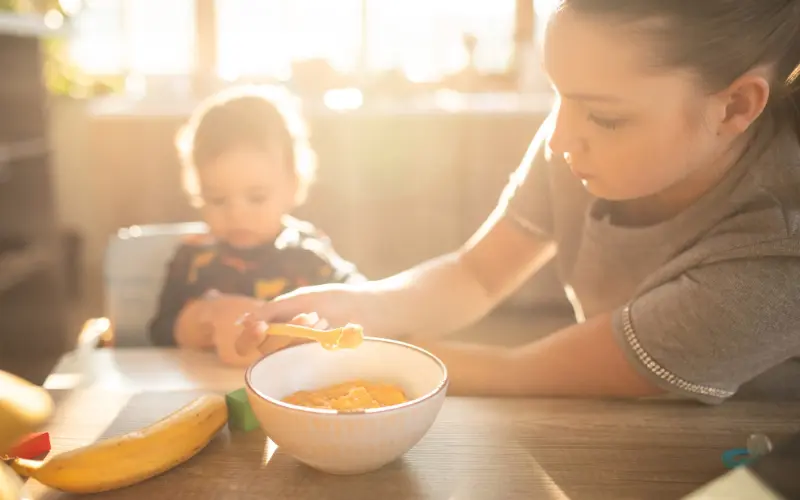
Now that you know the basics, let’s dive into introducing solid foods for babies and the best options to begin with. Start with easy-to-digest, nutrient-dense foods such as:
- Vegetables: Carrots, peas, sweet potatoes
- Fruits: Bananas, avocados, applesauce
- Grains: Baby rice cereal or oatmeal
Once your baby has tried several single-ingredient foods without any allergic reactions, you can begin to combine flavors and introduce more complex dishes. For instance, mixing a little breast milk or formula with pureed vegetables can create a familiar taste your baby might enjoy.
One essential item to have on hand during this process is our Non-Slip Baby Bibs. These bibs are perfect for minimizing messes during meal times, making cleanup easier while keeping your baby comfortable.
When and How to Introduce Solid Foods: Signs of Readiness
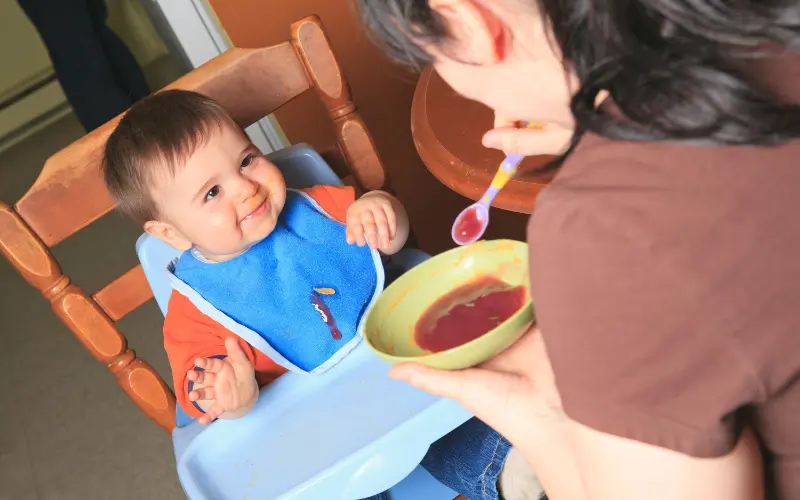
Many parents ask how to tell if their baby is ready for solids. Here are the signs of readiness for when and how to introduce solid foods:
- Sitting up with support: Your baby should be able to sit upright with minimal assistance.
- Interest in food: If your baby watches you eat and seems interested in grabbing food, it’s a good sign they’re ready to try solids.
- Mouth movements: Your baby should no longer be pushing food out of their mouth with their tongue. This tongue-thrust reflex usually disappears around six months.
Common Challenges and Solutions
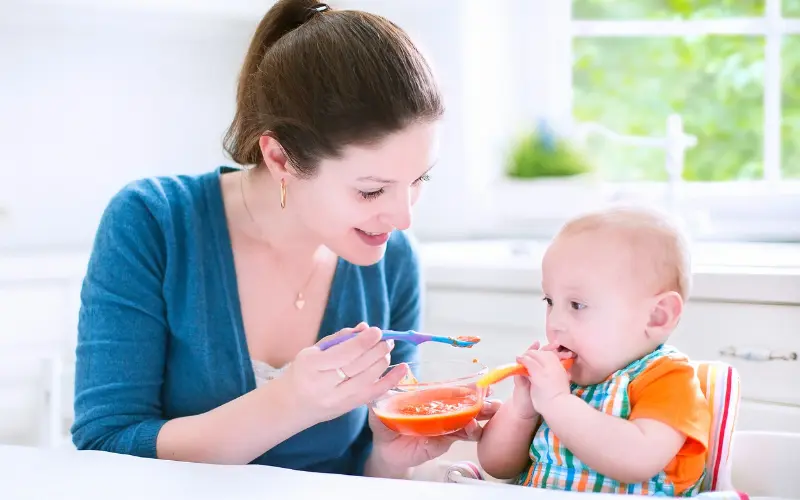
Introducing solid foods for babies can come with a few challenges. Some babies may refuse food at first or show little interest. Here are some solutions to common issues:
- Food refusal: It’s normal for babies to be hesitant about new textures and flavors. Try reintroducing the same food multiple times, and don’t force your baby to eat.
- Gagging: Gagging is a natural part of learning to eat solids and shouldn’t be confused with choking. Ensure you’re offering age-appropriate textures and keep calm if gagging occurs.
- Messy meals: Solid foods can get messy, but that’s part of the process! Allow your baby to explore and make a mess; it helps them develop motor skills.
Using products like our Silicone Feeding Set and Non-Slip Baby Bibs can help make mealtime more manageable, while our High Chair with Adjustable Tray provides a sturdy, easy-to-clean surface for your baby’s exploration.
As you embark on the journey of introducing solid foods to your baby, it’s essential to consider all aspects of their comfort, including their clothing. Babies with sensitive skin may react to certain fabrics or materials, which can lead to discomfort during mealtime. To ensure your little one is happy and cozy while exploring new tastes and textures, check out our guide on How to Choose Baby Clothes for Sensitive Skin. This resource provides valuable insights into selecting the right fabrics and styles that will keep your baby’s skin protected, allowing them to focus on enjoying their first solid meals without any distractions.
Feeding Your Baby: When to Start with Solid Foods and How to Progress
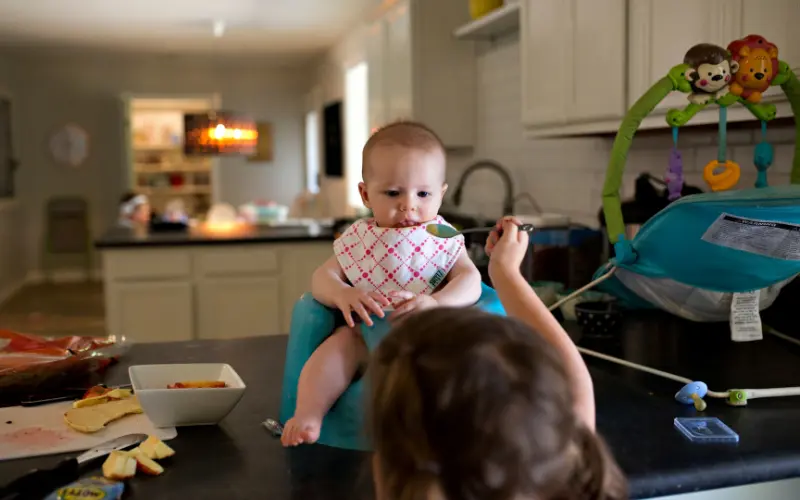
Once your baby has adjusted to the first few foods, you can begin introducing new flavors and textures. Feeding your baby: when to start with solid foods is just the first step—next comes offering variety. Aim to introduce a wide range of tastes, from sweet to savory, to help your baby develop a healthy palate. Some suggestions for the next stages include:
- Protein sources: Pureed chicken, turkey, or lentils
- Healthy fats: Avocado or a small drizzle of olive oil
- Finger foods: Soft-cooked vegetables or small pieces of bread
As your baby becomes more experienced, you can move on to thicker purees and eventually soft finger foods. Always ensure that foods are cut into small pieces to avoid choking hazards.
Introducing Solid Foods for Babies: Safety Tips

Safety is a top priority when introducing solid foods for babies. Here are some key safety tips to keep in mind:
- Avoid honey: Do not give honey to babies under one year old due to the risk of botulism.
- Watch for allergies: Introduce new foods one at a time, waiting three to five days before offering another new food to monitor for any allergic reactions.
- No choking hazards: Avoid giving your baby foods like whole grapes, nuts, or popcorn.
By following these guidelines, you can ensure that introducing solids is both a safe and enjoyable experience for you and your baby.
When and How to Introduce Solid Foods: A Recap
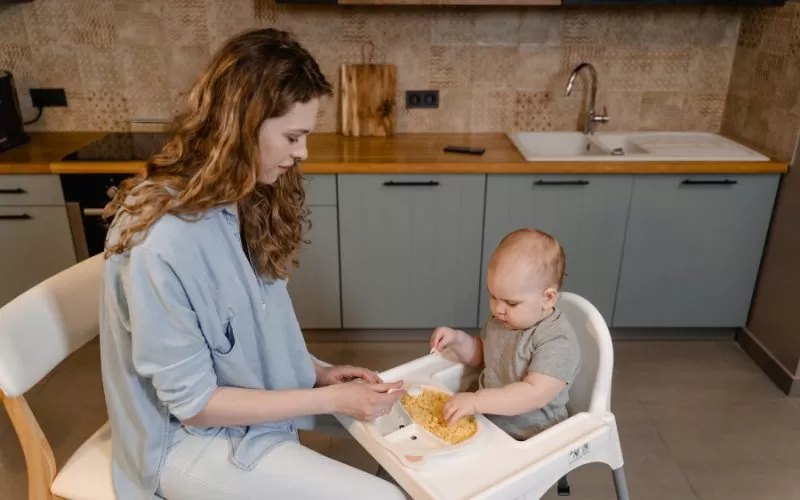
In summary, when and how to introduce solid foods varies slightly for every baby, but the general recommendation is around six months. Look for signs that your baby is ready, start with simple foods, and introduce new textures gradually. Don’t forget to equip yourself with the right feeding products, like our Silicone Feeding Set, Non-Slip Baby Bibs, and High Chair with Adjustable Tray, which can make the process smoother and more enjoyable.
By following these steps, you’ll ensure your baby has a positive first experience with solid foods and is on the path to a healthy diet. Remember, patience is key, and mealtime should be fun for both you and your little one.
Conclusion
Starting your baby on solid foods is a big milestone, but with the right approach, it can be an enjoyable and rewarding journey. Whether you’re figuring out when and how to introduce solid foods or learning more about feeding your baby: when to start with solid foods, the tips in this guide will help make the transition smoother. Be sure to explore our store for baby-friendly feeding products, like our Silicone Feeding Set, Non-Slip Baby Bibs, and High Chair with Adjustable Tray, to enhance your baby’s feeding experience.
With these insights and products at your disposal, introducing solid foods for babies becomes an exciting adventure filled with discovery and joy!

